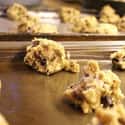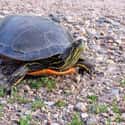-
(#12) Gin and tonic
- Beverage
Malaria in colonial India was a major problem for British citizens and soldiers and, as a result, they relied on quinine to combat the disease. Derived from the bark of the cinchona tree, quinine was popular with European settlers in South America during the 17th century as an anti-fever drug. In colonial India, it was again used for fevers, and due to its bitterness, was usually mixed with soda water and sugar.
The bubbly beverage soon became a new drink - tonic water; the first patents for it appeared as early as 1858. Schweppes tonic water entered the market in 1870 as "Indian Quinine Tonic" and was mixed with alcohol, namely gin.
The addition of gin to quinine and tonic water had been taking place for decades by the time commercial concoctions came on the scene. In British India, a daily gin and tonic was essential to maintaining imperial control. Part medicinal and part social, imbibing these cocktails became part of life for British expatriates. When they returned to England or ventured to other parts of the world, gin-and-tonic drinkers took their affinity for the beverage with them.
-
(#6) Benjamin Franklin
- Notable Figure
Books were incredibly expensive in the 18th century. Consequently, British publishers often combined helpful information regarding numerous subjects - including math, recipes, the alphabet, history, and other topics useful for the typical family. Recognizing a clever, practical idea when he saw one, Benjamin Franklin decided to pen an American version of the popular texts for colonial households.
To create the perfect publication, the inventor looked to British author George Fisher's The Instructor for inspiration. While Franklin made a few tweaks to some of the information - like changing city lists to reflect the map of the American colonies and providing a brief history of the nation - he added an entirely new collection from a 1734 Virginia medical handbook. Called Every Man His Own Doctor: The Poor Planter's Physician, the content walked readers through home remedies for numerous ailments, including "the suppression of the courses" (menstruation).
The text gave detailed instructions for the application and uses of herbs known to have abortifacient and contraceptive properties. After reading it, Ohio State University professor Molly Farrell, who specializes in early American literature, noted:
It's just sort of a greatest hits of what 18th-century herbalists would have given a woman who wanted to end a pregnancy early… It's very explicit, very detailed, [and] also very accurate for the time in terms of what was known at the time….
-
(#16) Cookie dough
- Food
The holidays are high cookie time, when treasured family recipes are dusted off and executed. For many people, part of the joy of cookie-baking isn't just eating a warm, oven-fresh treat; it's also sneaking bits of raw dough as your mother shoos you out of the kitchen and admonishes, “You'll die from eating raw cookie dough!”
Although maternal wisdom is seldom wrong, it isn't totally correct in this case. Eating raw cookie dough generally is not deadly.
It's true that uncooked dough could potentially harbor Salmonella bacteria, thanks to its core ingredients of raw eggs and flour. But the odds of developing a Salmonella infection from raw cookie dough are small, and if people do get sick, they typically recover without treatment. Still, the odds are enough to prompt some scientists to advise avoidance, especially for people who are immunocompromised, as they might require hospitalization for antibiotics and IV rehydration.
The good news is that not all cookie dough puts consumers at risk of illness - specially prepared edible raw cookie dough is perfectly safe to eat, and is now available in most supermarkets.
-
(#10) Skittles Don't Have Different Flavors, They Have Different Fragrances
Contrary to clever advertising strategies, people who eat Skittles don't actually experience “tasting the rainbow” with an array of flavors. Instead, Skittles engineers manipulate candy lovers' senses with colors and scents.
Flavoring individual varieties of candy is more expensive than adding coloring and fragrance, and human brains often can't distinguish the difference. According to neuroscientist Don Katz:
Skittles have different fragrances and different colors, but they all taste exactly the same.
Katz blindfolded taste testers to prove the hypothesis and required them to wear nose plugs. When the scientist fed single skittles to the participants, they could only guess the candy flavor around 50% of the time. According to Katz, this proved that Skittles eaters remained dubious about which "flavored" candy they ate when color and smell weren't differentiating factors.
-
(#7) Turtles Breathe Out Of Their Butts To Survive Winter Under Frozen Water
Animals often go to great lengths to survive the winter. Birds fly thousands of miles south looking for warmer weather; bears and some reptiles store up fat and body heat to hibernate during the colder months; other critters grow thick furs or fluffier feathers to serve as winter coats - and turtles breathe through their butts.
North American pond turtles spend more than half of their lives without air underwater, so it's no surprise the species has adapted some interesting coping strategies for surviving changing climates. These aquatic turtles dwell in frigid conditions during the winter months, forcing them to lower their body temperatures and significantly slow their metabolisms for survival.
This technique, called brumation, makes breathing much less important, as the hardy reptiles need smaller amounts of oxygen to survive. Still, they do need a little air to keep them moving in the winter months. So, they use a technique called cloacal respiration - a process that filters oxygen directly from the water through their butts and into their lungs.
-
(#2) Abraham Lincoln
- US President
The name "Fido" for a dog may have been popularized by Abraham Lincoln, but the President's canine by that name met a tragic fate similar to that of his owner. With a moniker that means "fidelity" in Latin, Fido was a yellow-haired mutt the Lincoln family took in about 1855.
Fido was a companion to Lincoln in Springfield, IL, but remained in the Midwest when the Lincoln family went to Washington, DC. Carpenter John Eddy Roll watched Fido during that time, and according to a letter he sent Lincoln in 1862, the dog was "doing well."
The faithful canine attended Lincoln's April 1865 funeral in Springfield and spent the rest of his days there. His life was cut short at some point in 1866:
One day the dog, in a playful manner, put his dirty paws upon a drunken man sitting on the street curbing [who] in his drunken rage, thrust a knife into the body of poor old Fido... So Fido, just a poor yellow dog, met the same fate as his illustrious master - assassination.
The drunken man was Charlie Planck, and in the immediate aftermath of the event, Fido went behind a nearby church, where the Rolls found him. They carried him home, buried him, and covered his grave with flowers.
New Random Displays Display All By Ranking
About This Tool
Our data comes from Ranker, If you want to participate in the ranking of items displayed on this page, please click here.






